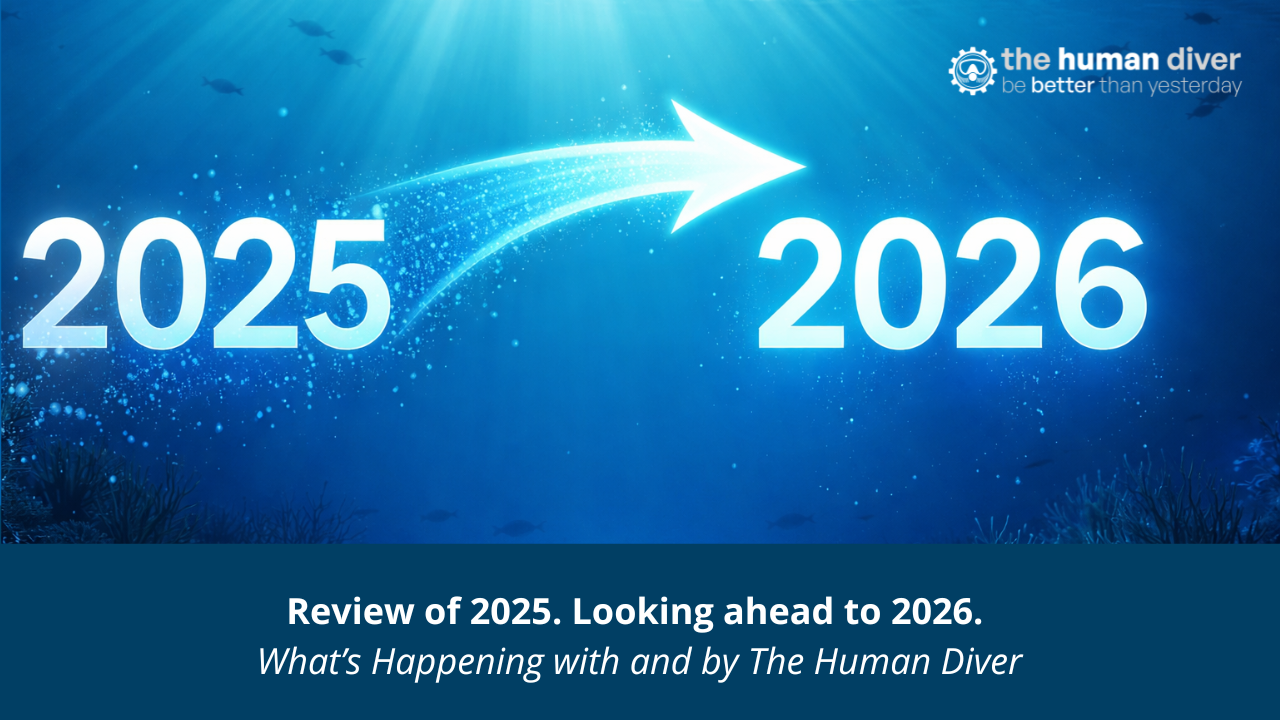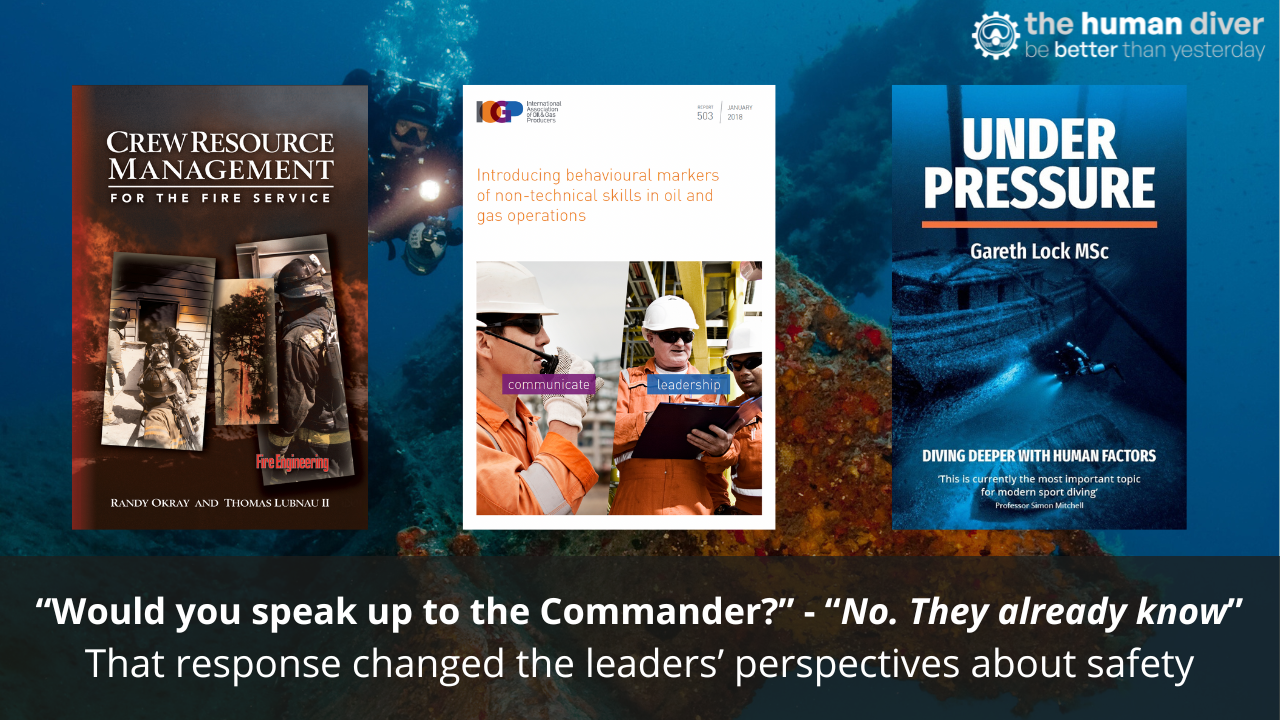
Drift vs Advancement: How do we push limits safely?
Sep 27, 2023I’ve read a few comments recently asking about the difference between normalisation of deviance and constructive deviation/advancement. In this blog I will look at the difference between the two and how we can learn, advance and improve as a diving community in a safe way.
What is Normalisation of Deviance?
Diane Vaughen coined this term in her book “The Challenger Launch Decision”. The book is about the lead up to the Challenger launch, how it was allowed to launch and the aftermath. She defined normalisation of deviance as “the gradual process through which unacceptable practice or standards become acceptable.” It is also sometimes described as “drift”. It’s really important that we understand that it is NOT improvement. Normalisation of deviance is when previously acceptable standards are ignored or violated so often that the new way of doing things becomes the norm, but it is not a considered choice.

Constructive deviation or advancement is done in a very different way. If we want to change the way we are doing things then it needs to be done in an open way. We declare that we are looking at other ways and researching them. It is done consciously. A great example in terms of diving would be the push towards nitrox. In the mid eighties nitrox as a breathing gas was becoming more and more popular. However, the risks involved in its use weren’t as well known as they are now and there was very little formal training. This caused people to believe it was a dangerous gas and should be banned. Things came to a head in the early nineties when the trade show DEMA banned the newly formed training agencies who promoted nitrox use. This prompted a workshop to be given to discuss nitrox, educating people and allowing DEMA to rescind the ban. This was done because it wasn’t just trial and error that had proved nitrox to be safe, it was done intentionally. There is a difference between safety hazards and acceptable risk. Sometimes that line has to be explored in order to decipher where it should be drawn.
Solo Diving
Someone recently asked Is solo diving deviant?”. Well, technically it is the oldest form of diving, the original way of doing it. Equipment was very expensive and there was often only one set of it, so solo was the norm. Therefore, as a form of diving, it can’t be considered a deviation. However, there are plenty of times when buddy diving becomes solo diving. In these cases, there has been a drift from the standard practise, which means for sure it is a deviation. Examples include accidental buddy separation, “planned” buddy separation (for example when two photographers get in together but aren’t diving as a buddy pair and quickly separate, otherwise known as “same ocean diving”) or when divers think they are good enough, so start to go out on their own. In these cases the situation has drifted from the norm (even “same ocean diving”) and from accepted safety procedures.
One way of looking at the differences is seeing the attitiude towards failure. When standard procedures are followed there are normally fail safes in position to ensure that if something goes wrong there are checks in place to first of all pick up on the failure and secondly to prevent it from causing major damage (in diving an example would be monitoring gas- we should be doing it on a regular basis but a well planned dive has considered gas volumes required with a contingency amount in case more is needed, and a turn pressure to take that into account). When trying something new, the fail safes are often increased to allow for mistakes that might not have been thought of. New cave divers are sometimes advised to carry far more reserve than an experienced cave diver as they are in a new situation so will likely encounter problems they are unfamiliar or less familiar at dealing with. During drift, the opposite can happen. Divers may start off following established norms for example aiming to surface from a recreational dive with 50 bar reserve but the more they do that and don’t have any problems, the more they will push that limit. This tends to happen over a longer period of time as the boundaries are slowly tested. The first time they surface with 40 bar (for example), they may realise this isn’t what they had planned and go back to making sure they surface with 50 bar. But over another period of time as nothing bad happens they might find themselves (intentionally or unintentionally) doing the same again. Then as time passes and again nothing bad happens they may start intentionally doing it. Slowly that 40 becomes 30, 20….

I did a photo dive once with a buddy, where we had agreed that we would begin the return to our exit point a 70 bar (we weren’t planning on going very far from it). My buddy signalled me after about an hour that we needed to head back, so we started slowly swimming, continuing to take photos on the way. After a few minutes my buddy signalled that we needed to stop taking photos and swim a little faster, which we did. Just as we were about to surface he looked at me and showed me his high pressure hose, giving it a shake to show me that it was almost completely depressurised. He surfaced with his last breath left in the tank. Afterwards we had a debrief and he explained he’d been having fun and could see I was too so didn’t give the signal to return until he had 50 bar as he knew from previous experience he could surface with far less than 50 bar without problems. It turned out that to surface with almost 0 bar was normal where he’d been diving before, with the reasoning that as you finished the dive very shallow and were monitoring your gas so were aware of exactly how much you had that it was ok. I asked if any of his buddy’s had ever had a problem and what the contingency was for if he or the buddy did have a problem. Of course, there wasn’t any. He acknowledged that it was “wrong” but struggled to change the behaviour as it had become ingrained and he perceived the risk as being low.

Summary
Normalisation of Deviance is the gradual process through which unacceptable practices or standards become accepted over time. It is not an intentional choice, and it represents a deviation from previously established safe norms. An example is the gradual acceptance of risky behaviors due to repeated success without considering the associated risks.
Constructive Deviation/Advancement is the deliberate and open exploration of new methods to improve safety and efficiency. It involves conscious efforts to research and adopt alternative practices, as exemplified by the push towards using nitrox in diving.
Ultimately, the attitude toward failure plays a pivotal role in distinguishing between these concepts. Standard procedures typically include fail-safes to detect and prevent failures, while when trying something new, additional fail-safes are often implemented to account for unforeseen mistakes.
More blogs about normalisation of deviance can be found here.

Jenny is a full-time technical diving instructor and safety diver. Prior to diving, she worked in outdoor education for 10 years teaching rock climbing, white water kayaking and canoeing, sailing, skiing, caving and cycling, among other sports. Her interest in team development started with outdoor education, using it as a tool to help people learn more about communication, planning and teamwork.
Since 2009 she has lived in Dahab, Egypt teaching SCUBA diving. She is now a technical instructor trainer for TDI, advanced trimix instructor, advanced mixed gas CCR diver and helitrox CCR instructor.
Jenny has supported a number of deep dives as part of H2O divers dive team and works as a safety diver in the media industry.
If you'd like to deepen your diving experience, consider taking the online introduction course which will change your attitude towards diving because safety is your perception, visit the website.
Want to learn more about this article or have questions? Contact us.










